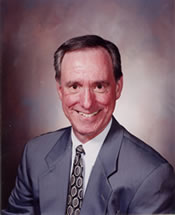Representing The Plaintiff, The Patent Owner
Case Synopsis:
A distributor of products used in the
health care industry invented a system and filed patents describing the system and associated methods. The purpose of the invention is to empower buyers to select vendors, find available products that meet specific needs and to procure those products from the selected vendor or vendors. The patents covering the invention were later sold to a technology company in the business of developing, licensing and supporting
software products of this type, which developed and sells a commercial version of the invention. The invention has applicability in a wide variety of industries and, although the was filed prior to the widespread business use of the Internet, has broad potential use for Internet-enabled procurement. Subsequent to the patent filing, several major business software firms developed similar applications that the patent owner asserts infringe its patents. Some of these software firms have licensed the inventions and the patent holder has filed patent infringement suits against others.
Expert was hired by counsel for the patent owner in two cases with the purpose of responding to the alleged infringers' invalidity claims (another expert handled the patent owner's infringement issues). More than 10 claims were asserted in both cases and the defendants each asserted Sections 102 and 103 invalidity defenses based on earlier patents, multiple commercial prior art systems and various combinations thereof. One of these suits was litigated prior to the recent Supreme Court decision affecting the criteria for obviousness defenses, and the other was litigated afterwards.
Expert Analysis:
The expert analyzed all of the asserted prior art, both patents and commercial systems, to determine whether any of them or any combination might have met all elements of any of the asserted claims. The expert also reviewed, exercised and/or attended demonstrations of each of the asserted prior art systems and their documentation in both cases, as well as reviewing the opposing expert reports and claim charts and the depositions of the inventors, the opposing expert, and other witnesses with first hand contemporaneous knowledge of the asserted prior art systems. There were initially more than 8 asserted prior art systems in each case, although some were eliminated prior to trial. Based on this effort, the expert stated opinions and testified that:
- None of the prior patents and none of the asserted prior art systems fully anticipated any one of the claims of the patents-in-suit.
- No combination of the prior patents and prior art systems rendered any of the claims obvious.
- All of the asserted prior art systems had defects relating to one or more of the following: commercial availability prior to the date of patent filing, documentary proof of commercial use prior to the date of the patent filing, contemporaneous unitary documentation, publicly available descriptive documentation, and/or enabling documentation (whether or not it was unitary and/or publicly available).
- All of the prior patents and asserted patent/system combinations had been considered by the PTO in its determination that the patent was valid.
Result:
Due to defects in contemporaneous documentation of the asserted prior art systems, several of them were eliminated from consideration by the Court in each of the trials. The expert gave testimony in court in both trials. There was a hung jury in the first case, but it was settled favorably to the patent holder before a second trial could be scheduled (in addition to paying damages, the defendant licensed the invention). The jury returned a verdict in favor of the patent holder in the second case and none of the asserted claims was found invalid under any theory asserted by defendant.
Brooks Hilliard, CMC, CCP has been a consulting and/or testifying expert in more than 50 cases involving computer systems alleged to have software defects, faulty operation, and/or defective performance (engaged by counsel for both users and vendors). These assignments have involved some of the industry's largest software developers. Issues have covered software and/or system deficiencies, unreliable software and defective functionality, including matters involving installation, implementation, customization and development services provided by software firms and independent contractors.
©Copyright - All Rights Reserved
DO NOT REPRODUCE WITHOUT WRITTEN PERMISSION BY AUTHOR.










